Jebusites Meaning In The Bible: Enemies and Conquest
In the Bible, the Jebusites are identified as the pre-Israelite Canaanite inhabitants of Jerusalem, often referred to as Jebus. Listed among the descendants of Canaan in Genesis 10:15-16, they controlled Jerusalem until King David’s conquest, a key moment detailed in 2 Samuel 5:6-9.
Their fortified city presented a significant challenge to the Israelites, signifying the strategic and political importance of Jerusalem. Various archaeological findings, including fortifications and pottery, corroborate their advanced urban society and cultural practices.
Exploring their interactions with surrounding civilizations and their impact within the Biblical narrative further highlights their historical significance.
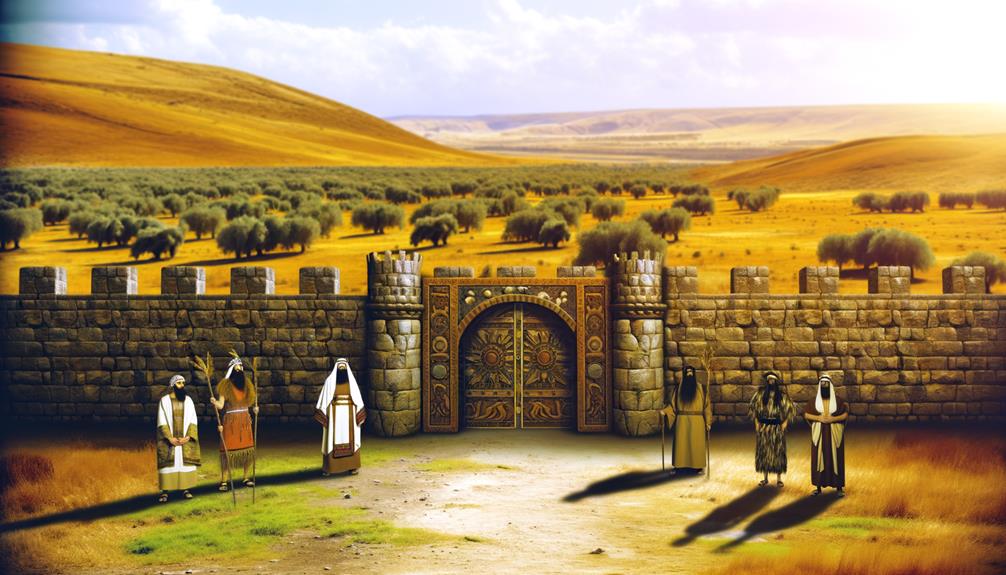
Jebusites Meaning in the Bible: History, Symbolism, and Biblical Role
| Aspect | Details |
|---|---|
| Name | Jebusites |
| Origin | Descendants of Canaan (Genesis 10:15–16) |
| Biblical References | Genesis 15:21, Joshua 15:8, 2 Samuel 5:6–10 |
| Key Location | Inhabitants of Jebus (later Jerusalem) |
| Role in Scripture | Opposed Israel’s conquest; controlled Jerusalem before David |
| Conquered By | King David (2 Samuel 5:7) |
| Spiritual Symbolism | Represents strongholds of opposition overcome by faith |
Origins of the Jebusites
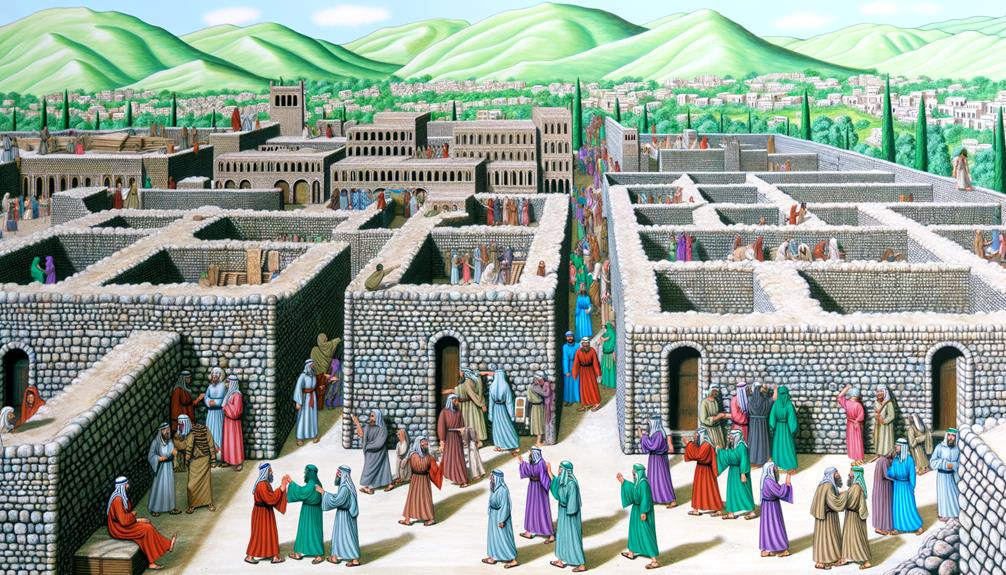
Tracing the origins of the Jebusites reveals a complex tapestry of historical and biblical narratives that situate this ancient people within the broader context of Canaanite civilization.
Emerging as one of the pre-Israelite inhabitants of the land of Canaan, the Jebusites are often associated with the city of Jerusalem, known in antiquity as Jebus.
Archaeological findings and ancient Near Eastern texts suggest that they were integral to the urban and socio-political landscape of the region.
The Jebusites are believed to have shared cultural and religious affinities with other Canaanite groups, contributing to a rich, yet intricate, historical milieu.
Their interactions with surrounding civilizations underscore their significance in the overarching narrative of ancient Near Eastern history.
Biblical References
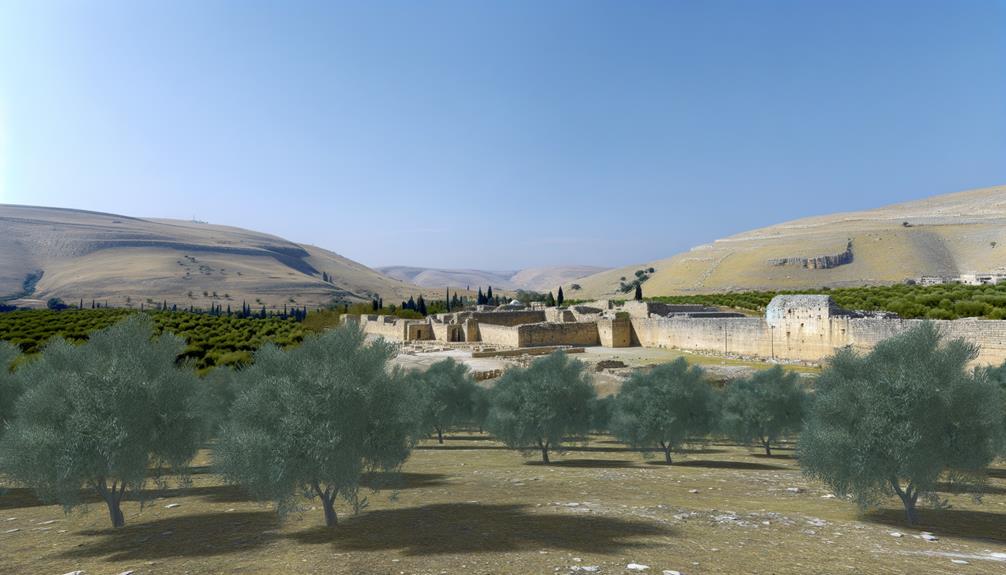
The biblical narrative provides multiple references to the Jebusites, portraying them as a significant and enduring presence in the land of Canaan, particularly in connection with the city of Jerusalem.
In Genesis 10:15-16, the Jebusites are listed among the descendants of Canaan, underscoring their ancient origins.
Joshua 15:8 and Judges 19:10 mention their control over Jerusalem, referred to as Jebus at that time.
Importantly, 2 Samuel 5:6-9 recounts King David’s conquest of the Jebusite stronghold, marking a pivotal moment in Israelite history.
Additionally, 1 Chronicles 21:18-30 describes David’s purchase of a Jebusite threshing floor, which later becomes the site of Solomon’s Temple.
These references highlight their integral role in Israelite narratives.
Jebusite Society and Culture
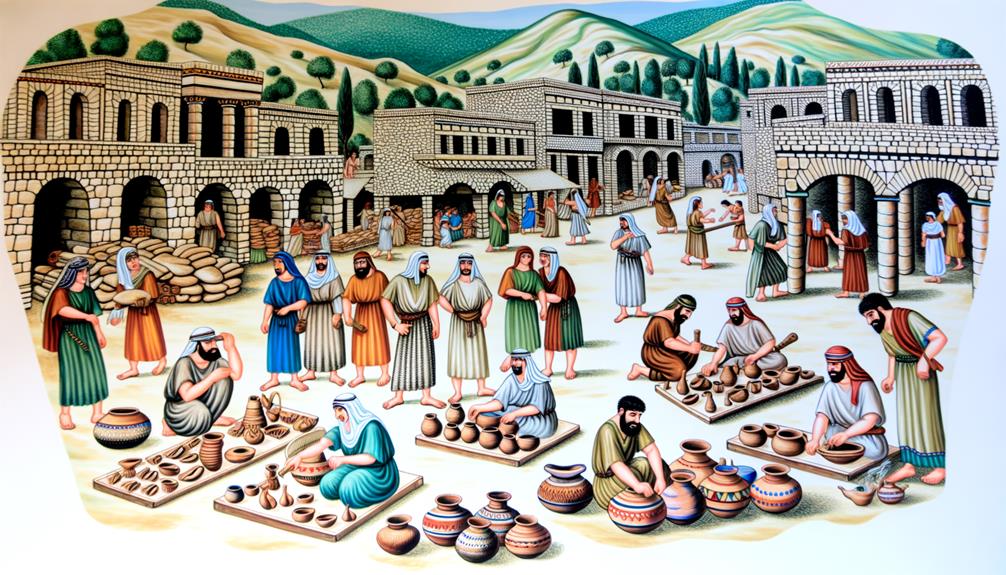
An examination of Jebusite society and culture reveals a complex and multifaceted civilization that profoundly influenced the historical and religious landscape of ancient Canaan.
As one of the several Canaanite tribes, the Jebusites were renowned for their fortified settlements and sophisticated urban planning. Artifacts indicate that their society was stratified, with evidence of specialized labor and trade.
Religious practices were deeply intertwined with their daily lives, as suggested by altars and sanctuaries uncovered in archaeological sites.
Language and script used by the Jebusites show affinities with other Canaanite dialects, underscoring a shared cultural heritage.
Their craftsmanship in pottery and metallurgy highlights a high degree of skill and artistic expression, contributing greatly to the region’s cultural mosaic.
Jerusalem’s Early Inhabitants
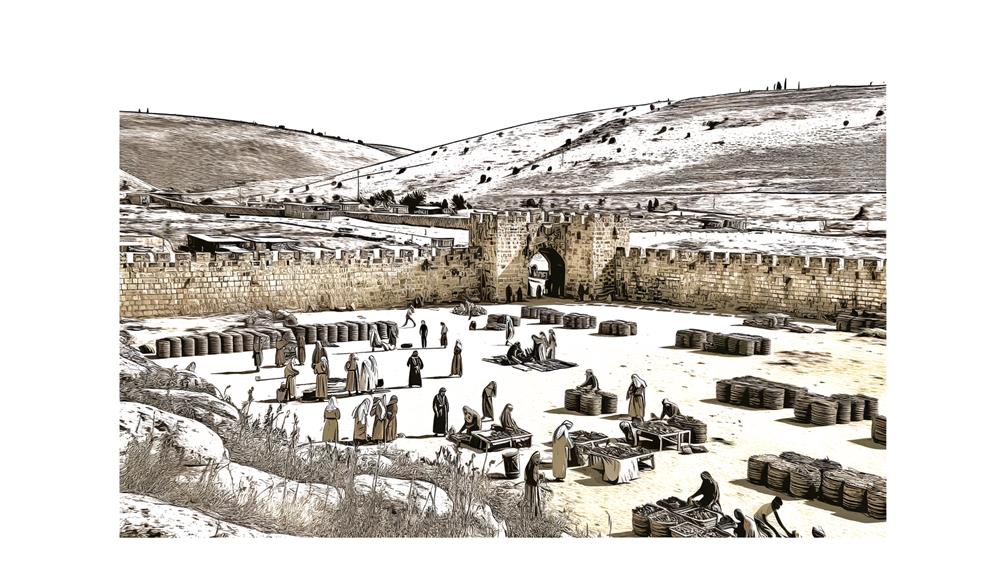
In examining Jerusalem’s early inhabitants, the Jebusites stand out as a significant group whose historical presence is well-documented in various biblical texts.
Their historical background provides vital insight into the socio-political landscape preceding Israelite control, while their cultural influence is evident in the architectural and religious imprints left on the city.
Understanding the Jebusites’ role and legacy is essential for comprehending the broader historical and cultural context of early Jerusalem.
Jebusite Historical Background
Tracing the origins of Jerusalem’s early inhabitants, historical and archaeological evidence identifies the Jebusites as a significant Canaanite tribe who established and fortified the ancient city.
The Jebusites are first mentioned in Egyptian texts from the 19th century BCE, suggesting a well-structured society capable of significant urban development. Excavations in Jerusalem have uncovered remnants of Jebusite fortifications, water systems, and dwellings, indicative of their advanced engineering skills.
Biblical references further affirm their presence, with passages noting their resistance to Israelite conquest until King David’s reign. The Jebusite stronghold, known as Jebus, transformed under David into the City of David, signifying a pivotal shift in Jerusalem’s historical narrative.
This background underscores the Jebusites’ strategic and cultural importance in ancient Jerusalem.
Jebusite Cultural Influence
The diverse cultural practices of the Jebusites, from their religious rituals to their architectural innovations, greatly shaped the early socio-cultural landscape of Jerusalem.
Their polytheistic worship, evidenced by various altars and relics, indicates a complex spiritual life that influenced subsequent religious developments in the city.
Architecturally, the Jebusites are credited with constructing robust fortifications, particularly the defensive walls of ancient Jerusalem, which provided a template for future urban planning.
These fortifications not only exemplify their engineering acumen but also underscore their strategic foresight in safeguarding the city.
In addition, Jebusite social structures and governance models contributed to the administrative frameworks later adopted by successive inhabitants.
Collectively, these cultural elements underscore the Jebusites’ pivotal role in Jerusalem’s foundational history.
Conflict With Israelites
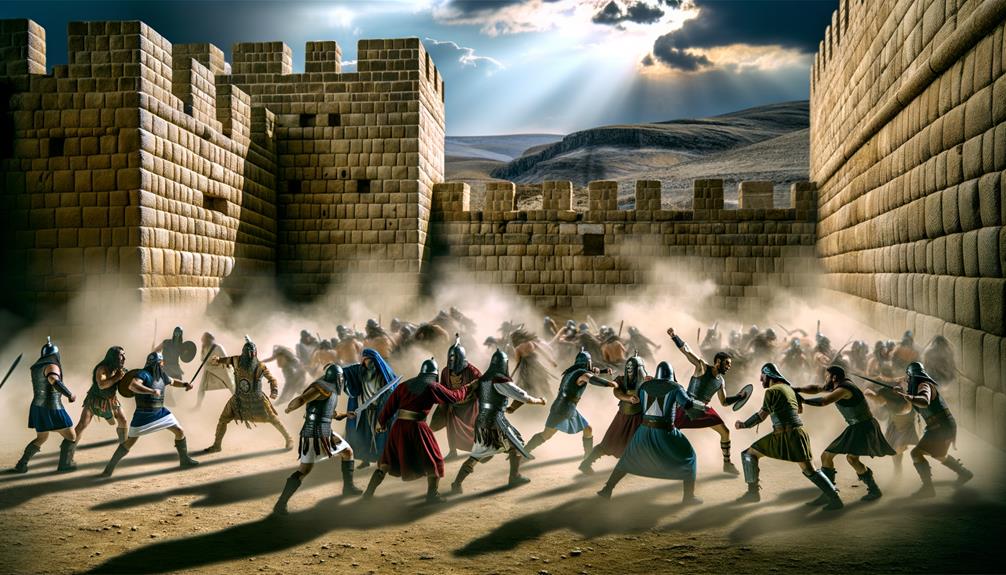
The conflict between the Jebusites and the Israelites is a pivotal aspect of the biblical narrative, necessitating an examination of the historical background context that frames their interactions.
A thorough overview of biblical accounts reveals recurring confrontations, primarily centered around control of Jerusalem.
Key battles, such as the conquest led by King David, underscore the strategic and theological significance of these clashes.
Historical Background Context
Delving into the historical background of the Jebusites reveals a complex narrative marked by their prolonged conflict with the Israelites, particularly during the conquest of Canaan.
The Jebusites, a Canaanite tribe, were indigenous inhabitants of Jerusalem, known then as Jebus. Archaeological evidence and ancient texts suggest that the Jebusites had established a fortified city, making it a formidable challenge for the invading Israelites.
This conflict is emblematic of the broader struggles faced by the Israelites as they sought to establish their presence in the Promised Land. The Jebusites’ resistance is historically significant, illustrating the broader geopolitical dynamics of the region during this era.
Their eventual subjugation underscores the tumultuous and often violent process of territorial consolidation in ancient Canaan.
Biblical Accounts Overview
Examining the biblical narrative, the conflict between the Israelites and the Jebusites is prominently highlighted in the context of the Israelites’ campaign to conquer Jerusalem. This conflict is documented in various Old Scriptures passages, particularly in the Books of Joshua and Judges.
The Jebusites, identified as the original inhabitants of Jerusalem, resisted the Israelite incursion, leading to prolonged hostilities. The Jebusites’ fortified city of Jerusalem posed a significant challenge to Israelite forces.
Despite initial setbacks, the Israelites, under King David‘s leadership, eventually captured the city, as recorded in 2 Samuel 5:6-10. This conquest marked a pivotal moment, shifting Jerusalem from Jebusite control to becoming the political and spiritual center of Israelite nationhood.
Key Battles Analysis
A detailed analysis of the key battles between the Israelites and the Jebusites reveals strategic maneuvers and military tactics pivotal to the eventual Israelite victory and capture of Jerusalem.
The biblical account in Joshua 10-12 chronicles a coalition led by the Jebusites, countered by Joshua’s strategic use of surprise attacks and psychological warfare.
The decisive encounter occurred under King David, who employed a covert operation via the water shaft to infiltrate the Jebusite stronghold (2 Samuel 5:6-8).
This tactical ingenuity, combined with superior military organization, facilitated the Israelites’ successful siege and subsequent occupation.
These engagements underscore the importance of adaptive strategies and illustrate the complex interplay of geography, leadership, and tactical innovation in ancient warfare.
King David’s Conquest
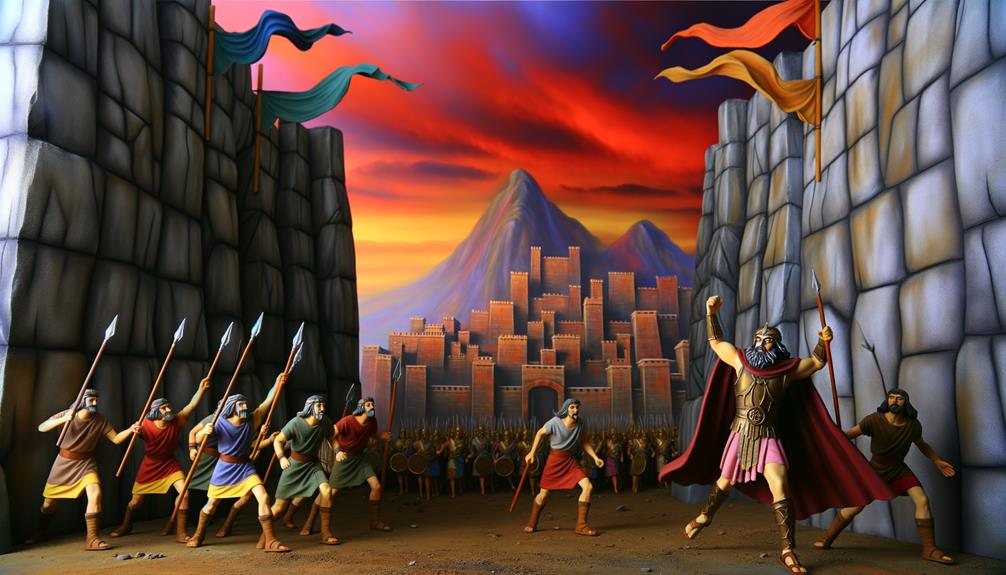
King David’s strategic capture of Jebus, later known as Jerusalem, was monumental.
By seizing this well-fortified city, he not only demonstrated military prowess but also unified the tribal factions under a central authority. This conquest facilitated the shift of Jerusalem into the heart of the Israelite kingdom, where David established his capital.
Moreover, the city’s geographical centrality and defensible position made it an ideal choice.
David’s subsequent relocation of the Ark of the Covenant to Jerusalem symbolically reinforced its status as the spiritual epicenter, intertwining political and religious significance in one locale.
Role in Jewish Tradition

The historical conquest of the Jebusites by King David laid the foundational framework for Jerusalem’s revered role in Jewish tradition, intertwining its political significance with profound spiritual meaning.
This event signified the establishment of Jerusalem as the epicenter of Jewish religious life, ultimately housing the First and Second Temples, central to Jewish worship and identity. The city became a symbol of divine promise and covenant, reinforcing Jewish continuity and heritage.
| Aspect | Jebusite Influence | Jewish Tradition Impact |
|---|---|---|
| Political | Conquest by King David | Establishment of Jerusalem |
| Religious | Pagan worship sites | Construction of the Temples |
| Cultural | Jebusite heritage and practices | Integration and transformation |
This synthesis of religion and governance underpins the enduring sanctity of Jerusalem in Jewish tradition.
Archaeological Evidence
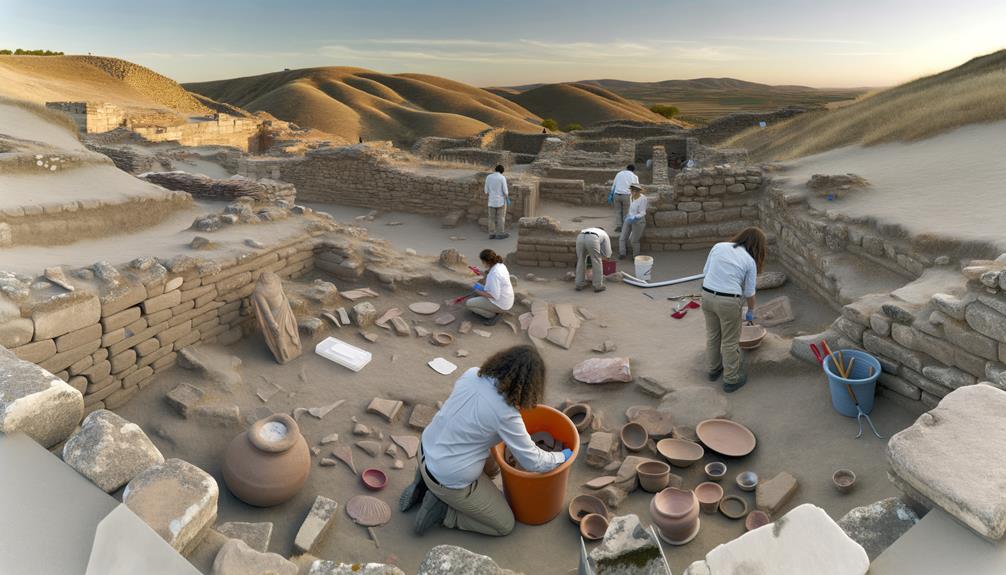
Ample archaeological findings provide essential insights into the existence and cultural practices of the Jebusites in ancient Jerusalem. Excavations in the City of David have unearthed remnants of fortifications and water systems attributed to this enigmatic Canaanite tribe.
Notable discoveries include the Stepped Stone Structure, believed to be part of the Jebusite fortifications mentioned in biblical texts. Additionally, pottery shards and artifacts unearthed from these sites exhibit distinct stylistic elements, corroborating their Jebusite origins.
These findings suggest a complex, urban society with advanced engineering skills. The architectural ingenuity, particularly in water management, indicates a well-organized community, thereby providing a tangible connection to the Jebusites’ historical presence and their role in shaping ancient Jerusalem’s urban landscape.
Legacy in Religious Texts

Religious texts, particularly the Hebrew Bible, offer extensive insights into the legacy and significance of the Jebusites in the context of ancient Israelite history.
The Jebusites, often identified as the original inhabitants of Jerusalem, are first mentioned in Genesis 10:16 and later prominently in Joshua and Judges.
Their most notable role emerges during King David‘s conquest of Jerusalem, transforming it into the City of David (2 Samuel 5:6-9).
Despite their defeat, the Jebusites’ presence is symbolically preserved through Araunah’s threshing floor, where Solomon’s Temple was later constructed (2 Chronicles 3:1).
This enduring legacy underscores their pivotal, albeit often adversarial, interaction with the Israelites, shaping the religious and cultural landscape of ancient Israel.
Conclusion
The Jebusites, like an ancient tapestry woven into the fabric of biblical history, greatly influenced the sociopolitical landscape of early Jerusalem. Their interactions with the Israelites, culminating in King David’s conquest, underscore their pivotal role in shaping Jewish tradition.
Archaeological findings continue to shed light on their existence, offering tangible links to scriptural accounts. The Jebusites’ enduring legacy within religious texts underscores their lasting impact on the historical and theological narrative of the region.






